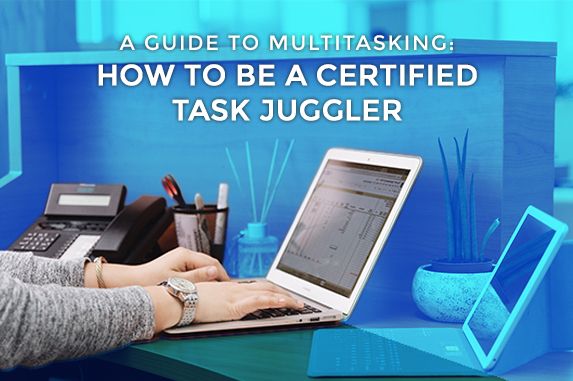A Guide to Multitasking: How to Be a Certified Task Juggler

Do you have “capable multitasker” or something similar listed on your resume? Perhaps it’s time to reconsider that.
According to science, multitasking is not a productive habit. It might even be the exact opposite of productivity. Switching between as little as two tasks at a time is already a strain on your brain.
In a perfect world, we would do just as science says and focus on one task at a time. Unfortunately, the world isn’t perfect. So we make the most of the 24 hours we have in a day.
Since we can’t avoid multitasking (or task-switching) let’s do what humans do best: adapt and evolve. Here’s our guide on how you can be a certified task juggler:
Manage your tasks wisely
No matter how much you accomplish in a day, there will always be something else added to your plate. This often ends up being an immense source of stress for any professional. The usual reaction to this would be to try and juggle all of your tasks at the same time, which often results in dropping them altogether.
Our advice? Don’t overcomplicate things. Just take it one baby step at a time. Make a list of all of your tasks and break them down into reasonable chunks of work.
Use a task management tool, like Asana or Trello, to keep track of your work. They provide something of a visual aid for you so you can view all the projects that you’re working on. These apps also have convenient features for team collaboration so you don’t have to bombard people with email updates.
Have a plan of attack
Once you’ve listed down all your tasks, set and schedule their due dates to help prioritize which ones to do first and which ones you can put off.
Try sorting them by most crucial, moderately crucial, and least crucial. Depending on your habits, you can work on the most crucial tasks or the easier ones first when you start your day. We recommend eating the frog instead of procrastinating on the more challenging projects.
You can switch between the smaller and more familiar tasks. Your brain is accustomed to doing these simpler tasks which means that they take less of an effort to complete.
Keep your focus
Set aside time and fully commit to finishing one task (at a time). This is probably the toughest one to do, but this allows you to keep up the momentum of work which your brain will thank you for. You might even notice that you expend less effort this way, compared to doing everything at once.
Give the Pomodoro Technique a try: train your brain to focus for a certain amount of time while also give yourself short, but valuable breaks. You might be surprised at how fast you go through your tasks once you get the hang of it!
Remember to hydrate!
In the middle of all the tasks that you’re trying to get through, make sure to drink plenty of water every now and then. Water can alleviate headaches and hunger!
Being made up mostly of water, humans need to hydrate constantly to stay functional. We instinctively reach for a cup of coffee when hustling to beat deadlines. However, caffeinated products also have diuretic effects, which means that we lose water more quickly the more we drink them.
While we know better than to tell you to lay off the java, we do encourage you to drink just as much water. Keep it at a one-to-one ratio.
Leave room for error
The switching cost or the back and forth from one task to another is one of the reasons why multitasking isn’t an effective habit. It takes a while for your brain to get in the groove of working on a task.
That’s why it’s important to make room for mistakes. You are only human after all and it won’t be the end of the world. At least, we hope it won’t be. It takes a team of people to do anything right. If anything goes wrong, address any problem areas, and do better next time.
Though it’s all well and good to go Wes Peden (popular American juggler) at work, try to manage your tasks better and keep your multitasking to a minimum. Focus on one big thing at a time, and maybe task-switch for the easier ones.
We’re not going to try and convince you to stop multitasking, because it’s much easier said than done. But by managing your multitasking habit, you can relieve some of the pressure off of your brain.